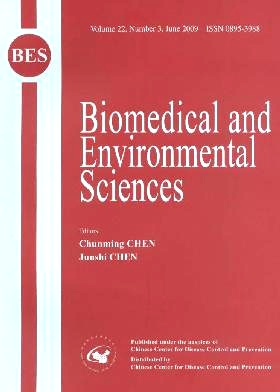Role of Prosurvival Molecules in the Action of Lidamycin toward Human Tumor Cells
-
Key words:
- Lidamycin /
- Prosurvival molecules /
- SIRTI deacetylase /
- Apoptosis /
- Mitotic cell death /
- Multidrug resistance
Abstract: Objective Lidamycin,an enediyne antibiotic,leads to apoptosis and mitotic cell death of human tumor cells at high and low concentrations.The reason why tumor cells have distinct responses to lidamycin remains elusive.This study was to elucidate if cellular prosurvival molecules are involved in these responses. Methods Cleavage of chromatin and DNA was observed by chromatin condensation and agarose gel electrophoresis.Accumulation of rhodamine 123 in lidamycin-treated cells was assayed by flow cytometry.Cell multinucleation was detected by staining with Hoechst 33342.Western blot and senescence-associated β-galactosidase (SA-β-gal) staining were used to analyze protein expression and senescence-like phenotype,respectively. Results SIRTI deacetylase remained unchanged in 0.5 nmol/L lidamycin whereas cleavage occurred when apoptosis was induced by lidamycin.Increased FOXO3a,SOD-1 and SOD-2 expression and transient phosphorylation of ERK were detected after exposure of human hepatoma BEL-7402 cells to 0.5 nmol/L lidamycin.High expressions of SIRT1 and Akt were found in colon carcinoma HCT116 p53 knock-out cells exposed to lidamycin.Degradation of PARP and p53 by lidamycin as a substitute for SIRT1 and Akt was confirmed with caspase inhibitor Q-VD-OPh and proteasome inhibitor MG132. Resistance to lidamycin-induced DNA cleavage was observed in breast cancer doxorubicin-resistant MCF-7 cells.This was not induced by P-glycoprotein as no accumulation of rhodamine 123 was detected in the resistant cells following exposure to lidamycin.In contrast to sensitive MCF-7 cells,a lower multinucleation rate for the resistant cells was measured following exposure to equal concentrations of lidamycin. Conclusions Cellular prosurvival molecules,such as SIRT1,Akt,SOD-1,SOD-2 and other unknown factors can influence the action of lidamycin on human tumor cells.
| Citation: | A-JING YANG, WEI-WEI SHI, YONG LI, ZHEN WANG, RONG-GUANG SHAO, DIAN-DONG LI, QI-YANG HE. Role of Prosurvival Molecules in the Action of Lidamycin toward Human Tumor Cells[J]. Biomedical and Environmental Sciences, 2009, 22(3): 244-252. |







 Quick Links
Quick Links
 DownLoad:
DownLoad: